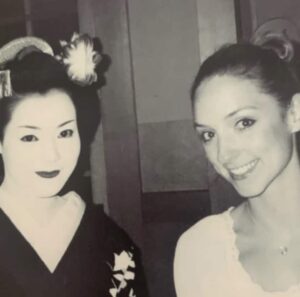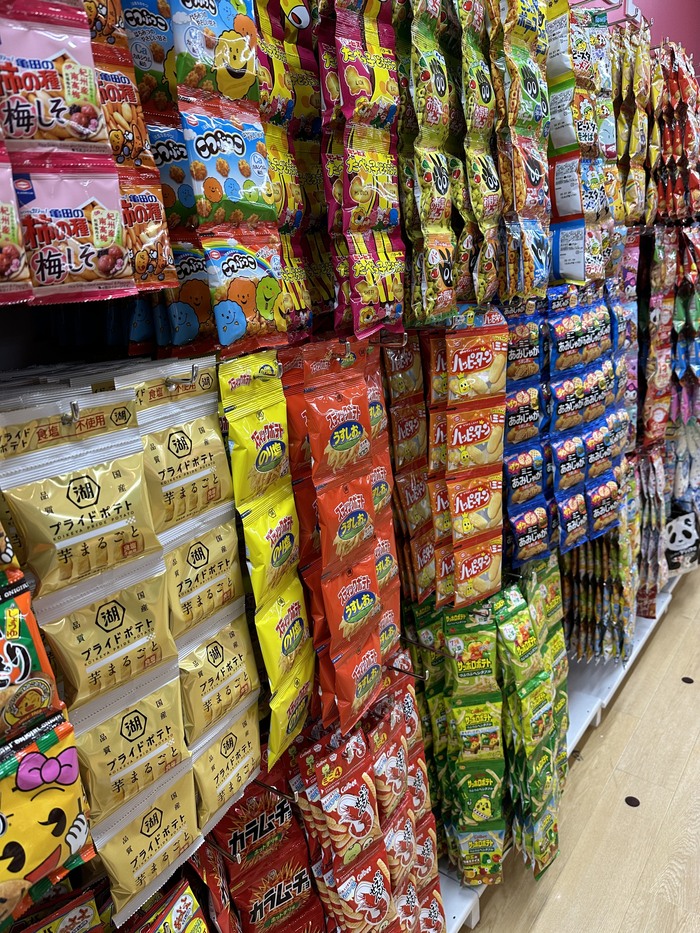
Victoria Lindsay is a registered dietitian nutritionist living and working in Tokyo. She currently sees patients at Tokyo Medical and Surgical Clinic or the International Unit at Aiiku Clinic. When not at work, you can find her running out in her neighborhood, experimenting
with new recipes in the kitchen, or chasing around her toddler.
For more information on Victoria’s services as a dietitian or to get in touch on social media, you can check out her Instagram account @dietitianinttokyo or visit her website at https://www.victorialindsayrd.
Daiso Japan is Japan’s largest 100 yen discount store. It is so popular that many Japanese people visit their local Daiso almost as often as they visit their local supermarket. You can find out store locations on the Daiso website here – however, once you are in Japan, it is probably easiest to google “Where is my closest Daiso?”
After my family and I moved to Japan a few years ago, there were many things we had to learn in order to feel as though we could navigate Tokyo and settle into our lives here.
After a lot of trial and error, we learned everything from the basics, such as how to shop for food
or pay your bills at the convenience store, to the more complex, like figuring out social customs or learning Japanese (still working on the latter!).
One of the things that I’ve had a lot of fun exploring while here has been the plethora of 100 yen stores. At first, I largely wrote them off as I never shopped at its equivalent in the US or the UK, but over time, I came to realize that the quality of many of the items at Daiso or Seria is crazy good. And, after becoming a mom during my first year here, I realized that the 100 yen store isn’t just convenient for new parents, it is essential.
From baby proofing items to spoons and bibs, there were so many useful things I could pick up there for a fraction of what I’d pay on Amazon or elsewhere that I began to make more frequent stops at Daiso (my preferred 100 yen chain) and soon trips there became part of my life as a Tokyoite.
On several of these trips to Daiso, the dietitian in me started spending more time in the food and snack section of the store. Although it will vary from shop to shop, I’ve found that Daiso usually contains the largest selection of foods and beverages.
Armed with an elementary knowledge of food related kanji, Google translate, and a lot of time, I went through the section to pick out some of the best snacks for kids that I felt were among the. healthiest or most nutrient dense options. Because if there’s anything that parents are constantly buying, it’s snacks for their kids.
But first, a few disclaimers…
1. “Healthiest” or “best” will always be subjective. Different kids have different nutrition needs.
2. While I do think it’s important to offer my child nutrient dense food and snacks, I want to be very clear that not everything she will eat will be “nutritious” and that is very intentional on my part. Highly processed snack foods are simply part of our current food environment and aren’t going anywhere. I plan for her to have exposure to those foods not only because I think it’s important to keep those foods off a pedestal, but also because I’ve worked with kids who have been strictly forbidden from having those foods and the results aren’t pretty. Think disordered eating patterns, intense fear of foods, or most commonly, binge eating the second they get access.
3. However, sometimes as a mom I need to serve my kid a snack that goes the distance – something that keeps her full for longer than two seconds or provides more nutrition on days she isn’t eating as much or is eating differently than usual (ex: traveling). I think it’s easier to find less nutrient dense snacks than the opposite, which is why I’m sharing some of my go-to Daiso picks. Trust me, I know how overwhelming it can be to read endless food labels when you don’t speak much if any Japanese.
So without further ado, my top healthy snack picks from Daiso are as follows:
1. Calbee Green Pea (Sayaendo) Snacks
Conveniently found in both larger (i.e. adult size) bags and smaller kid size packets, these snacks are the clear winner for me.
Compared to the many other salty snacks I looked it, these were by far the highest in both protein and fiber per serving, both of which increase satiety by keeping us fuller for longer.
This is no surprise as peas are a good source of both nutrients, and the kid size snack packet contained 2.1 grams of protein and 1.3 grams of fiber. Compared to another packet of the same size containing a popular Anpanman cracker that only had 0.6 grams of protein and 0 grams of fiber, you can see why these snacks are a better choice when it comes to beating hunger.
One note though: as these are fairly high in sodium (most snacks are here), I would skip or limit these for the under age 1 crowd.
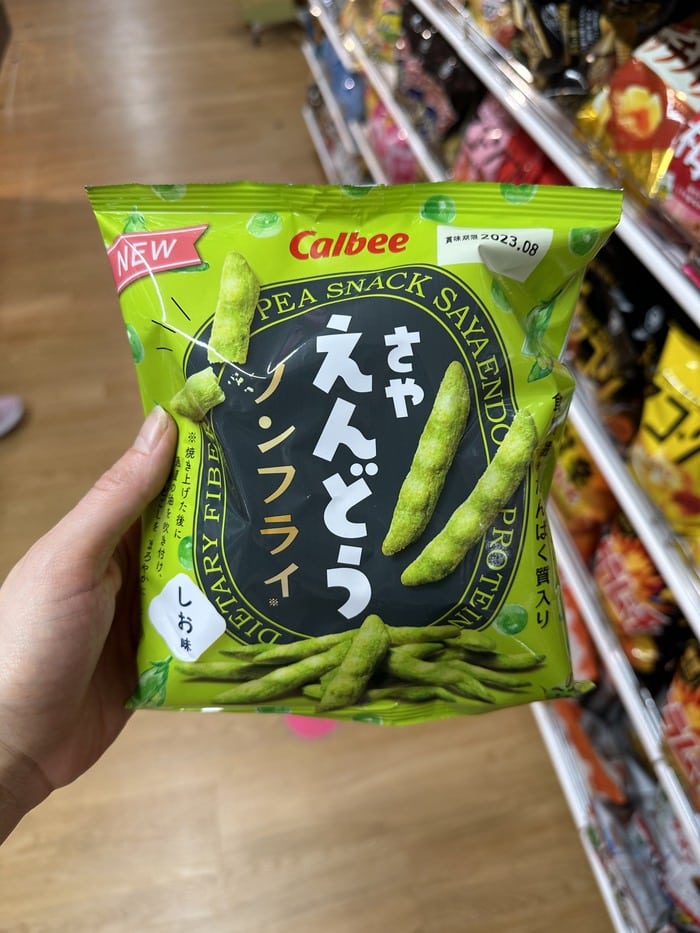
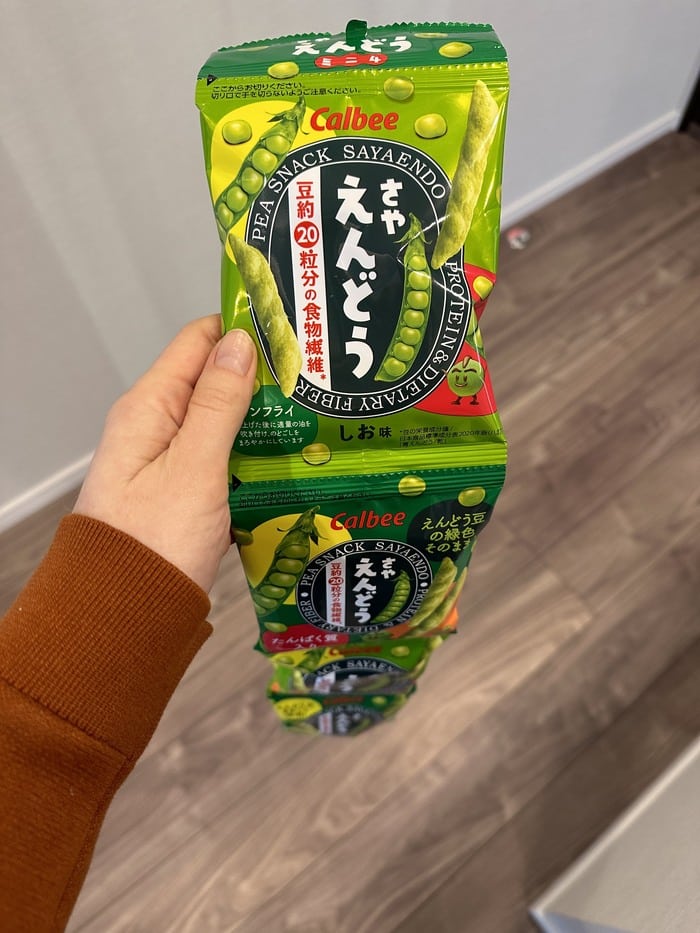
2. Calbee Fruit Granola Bits
Want something sweet instead of salty?
I enjoyed this as an alternative to cookies or other sweets that also provides a bit of protein (4.1 grams per serving) and fiber (3.1 grams per serving). This is likely coming from the soy protein, wheat bran, and barley contained in the granola bites, and paired with a yogurt and some fruit, it could even be part of a healthy breakfast on the go.
As they are quite crunchy, I would not recommend these for small children that aren’t able to chew hard foods and crunchy textures yet.
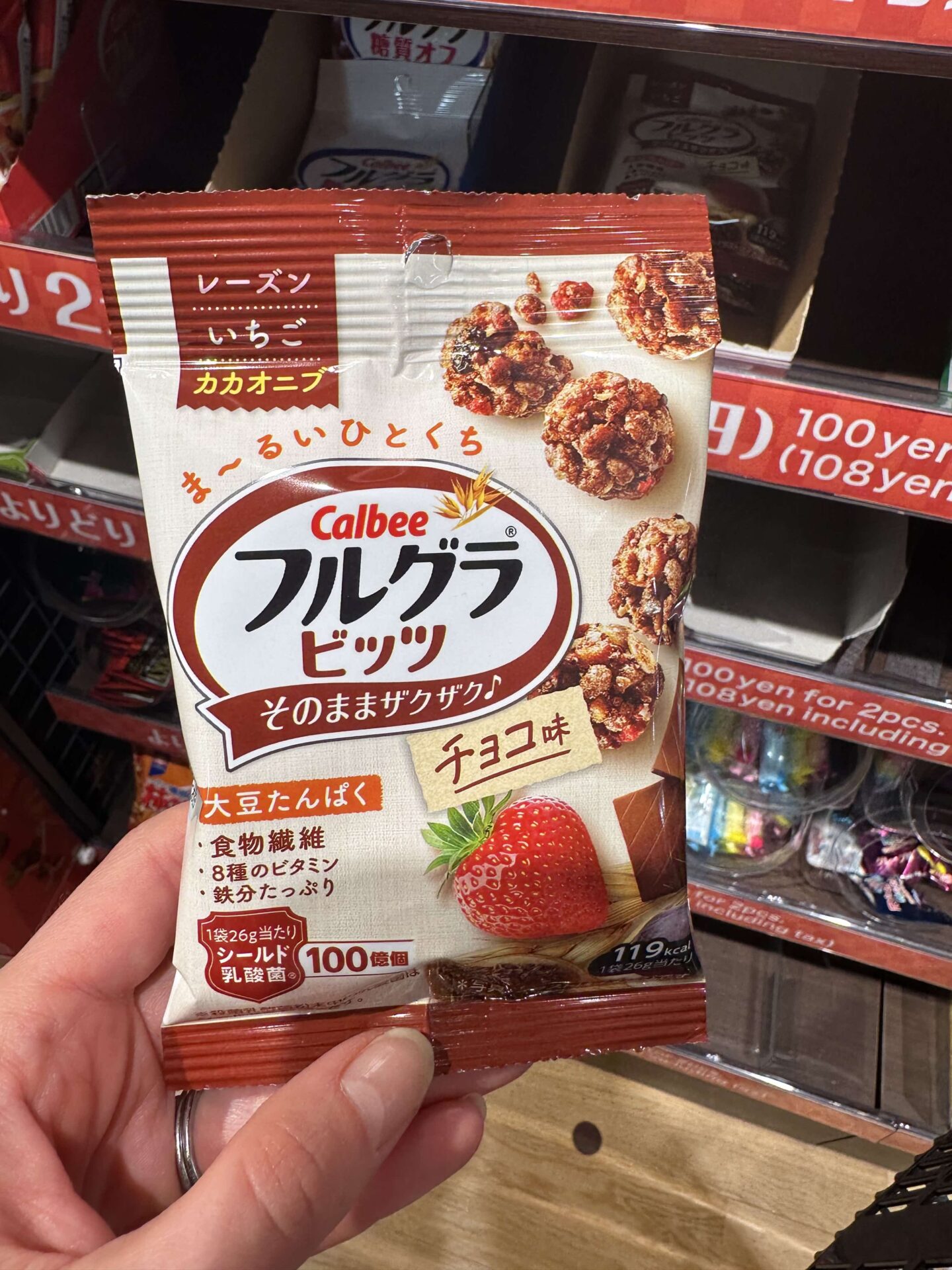
3. Mini Bags of Mixed Nuts and Seeds (Several Options)
One of my favorite snacks to get from Daiso for adults and older kids alike would definitely be their single serving packages of nuts and seeds. From plain and unsalted to flavored and lightly salted, you can pick a variety that suits your nutrition needs and tastebuds.
My. current favorites are unsalted dry roasted almonds and salted cashews, both of which contain a hefty amount of protein, fiber, and healthy unsaturated fat (exact amount will vary based on the size of the package and type of nut).
Please note that most pediatric feeding experts recommend avoiding whole nuts for kids under the ages of 4 or 5 to avoid choking.
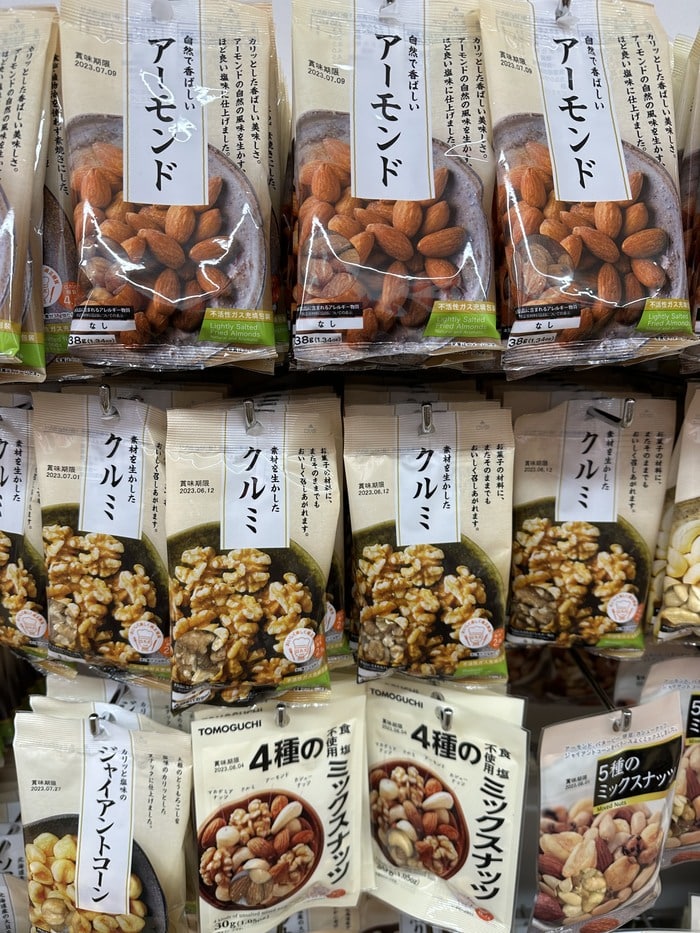
4. Dried Fruit like Raisins and Prunes
While most of the dried fruit at Daiso contained added sugar, I found that the raisins and prunes did not contain sugar.
Prunes are excellent for keeping our digestion and elimination moving – something that can be of extra importance when traveling and facing constipation with kids! – while raisins can be consumed plain or mixed with nuts for a homemade trail mix. I did see that the raisins contained a very minimal amount of vegetable oil, which didn’t concern me, but if that is something you have to avoid for health reasons, I’d skip it.
In addition, I’d also avoid serving raisins to kids younger than 18 months due to choking risks.
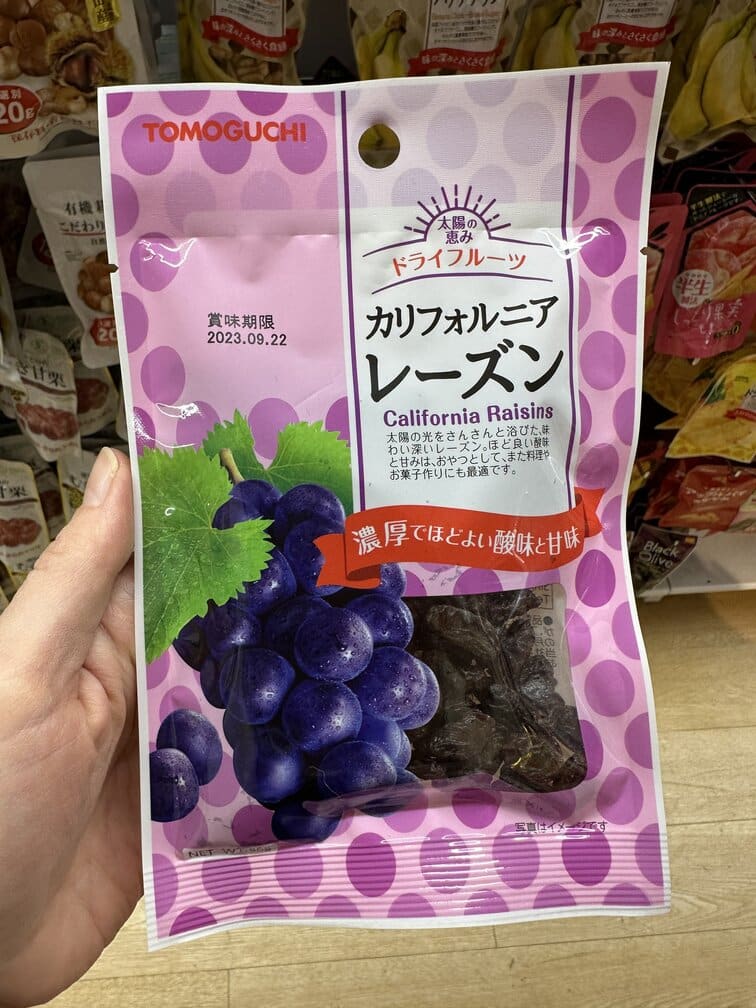
5. Roasted Sweet Potato Packets
I wish I would have found this when my daughter was younger and we were doing baby led weaning, as this would have made a perfect snack for her while traveling.
But no matter how old your kiddo, if they like sweet potatoes, these packets would be a fun snack – just grab a fork and enjoy!
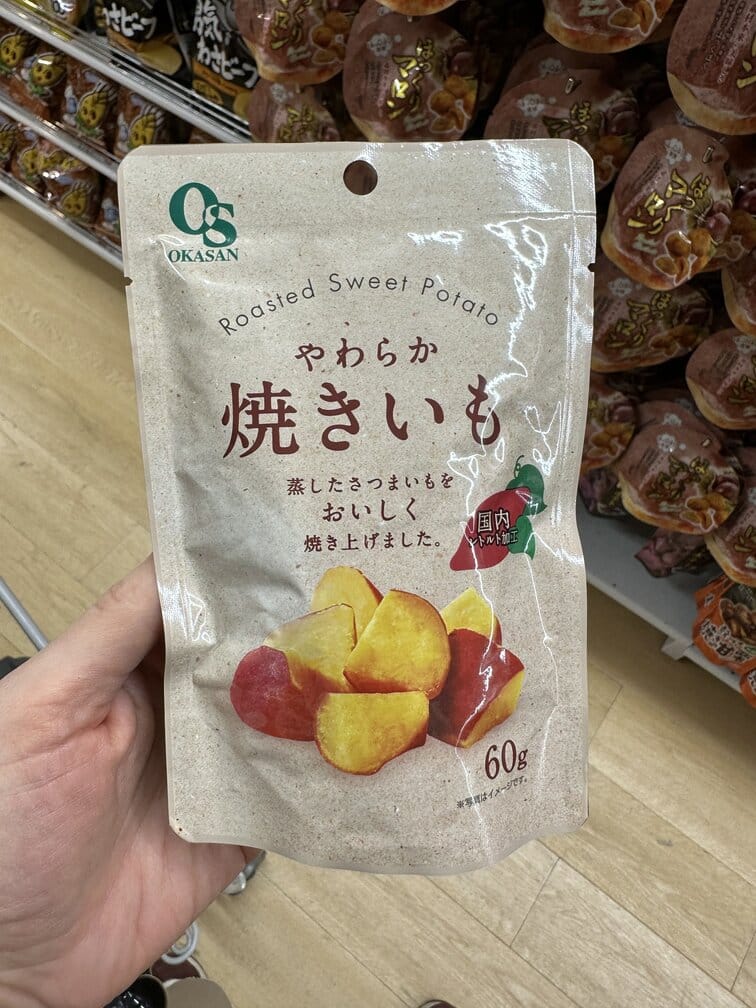
6. Black Olive Packets
Yet another easy, whole food snack that’s full of healthy unsaturated fat and great for both adults and kids.
Note that whole olives are best left for kids over the age of 2 – for the under 2 set, make sure to half or quarter them.
In addition, these are quite high in sodium so if salt intake needs to be restricted, I’d skip or limit these.
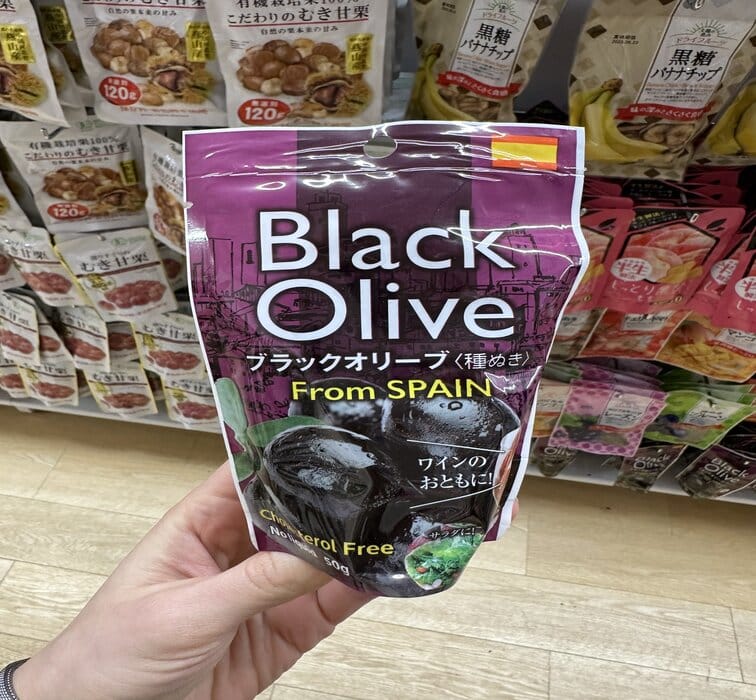
7. For the Extra Adventurous: Dried Fish and Squid
While I aim to model adventurous eating for my daughter, I admit I am still coming around to the idea of eating dried fish and squid as a snack. However, if these are something you or your kids are into, they are a fantastic source of protein and many varieties are available at Daiso. As I was taking a picture of the packages, a large group of 10 – 12 year olds came by and swiped up several bags so clearly they are a snack beloved by Japanese kids – who knows, maybe your kids will love them to if they don’t already!
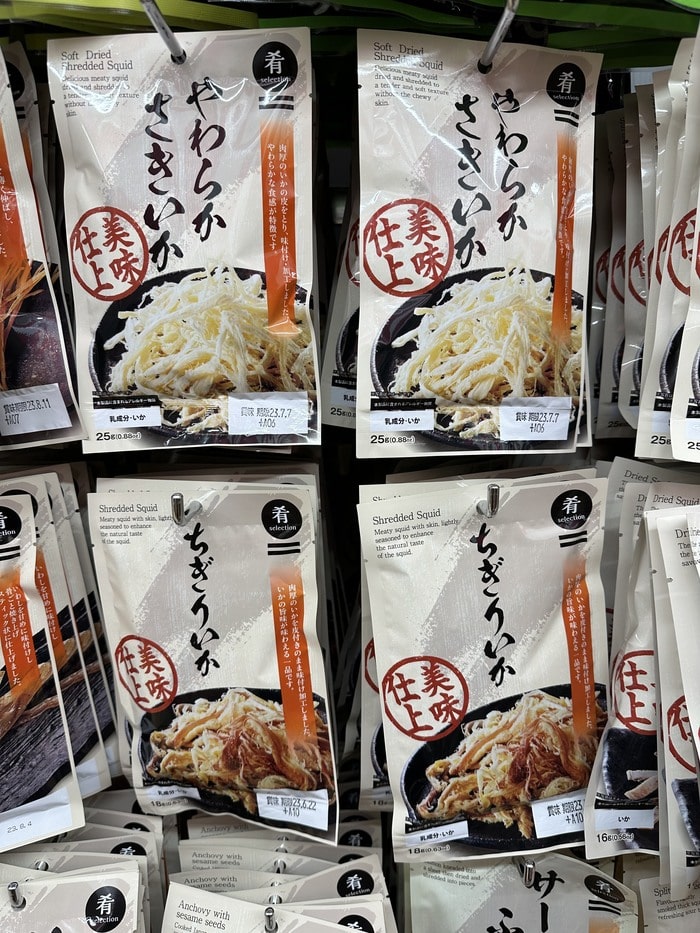
Victoria Lindsay is a registered dietitian nutritionist living and working in Tokyo. She currently sees patients at Tokyo Medical and Surgical Clinic or the International Unit at Aiiku Clinic. When not at work, you can find her running out in her neighborhood, experimenting
with new recipes in the kitchen, or chasing around her toddler.
For more information on Victoria’s services as a dietitian or to get in touch on social media, you can check out her Instagram account @dietitianinttokyo or visit her website at https://www.victorialindsayrd.




